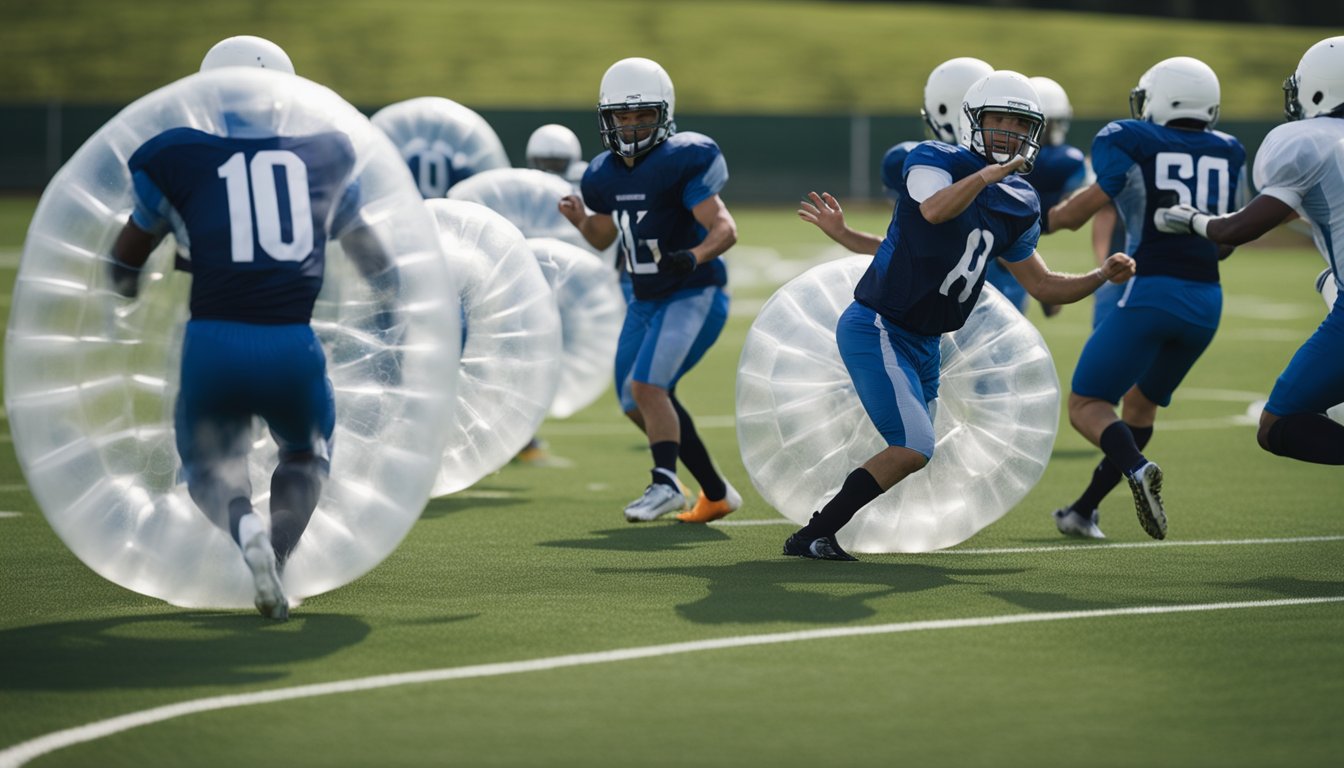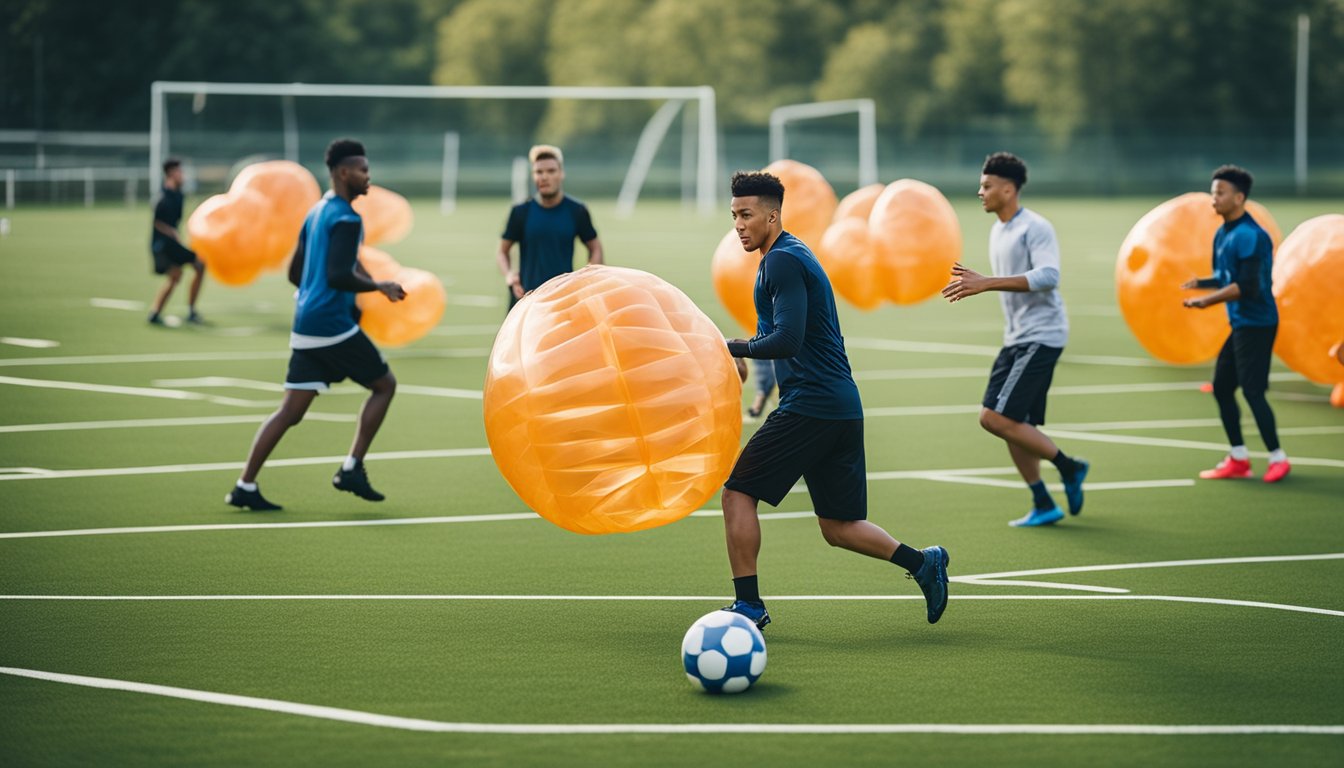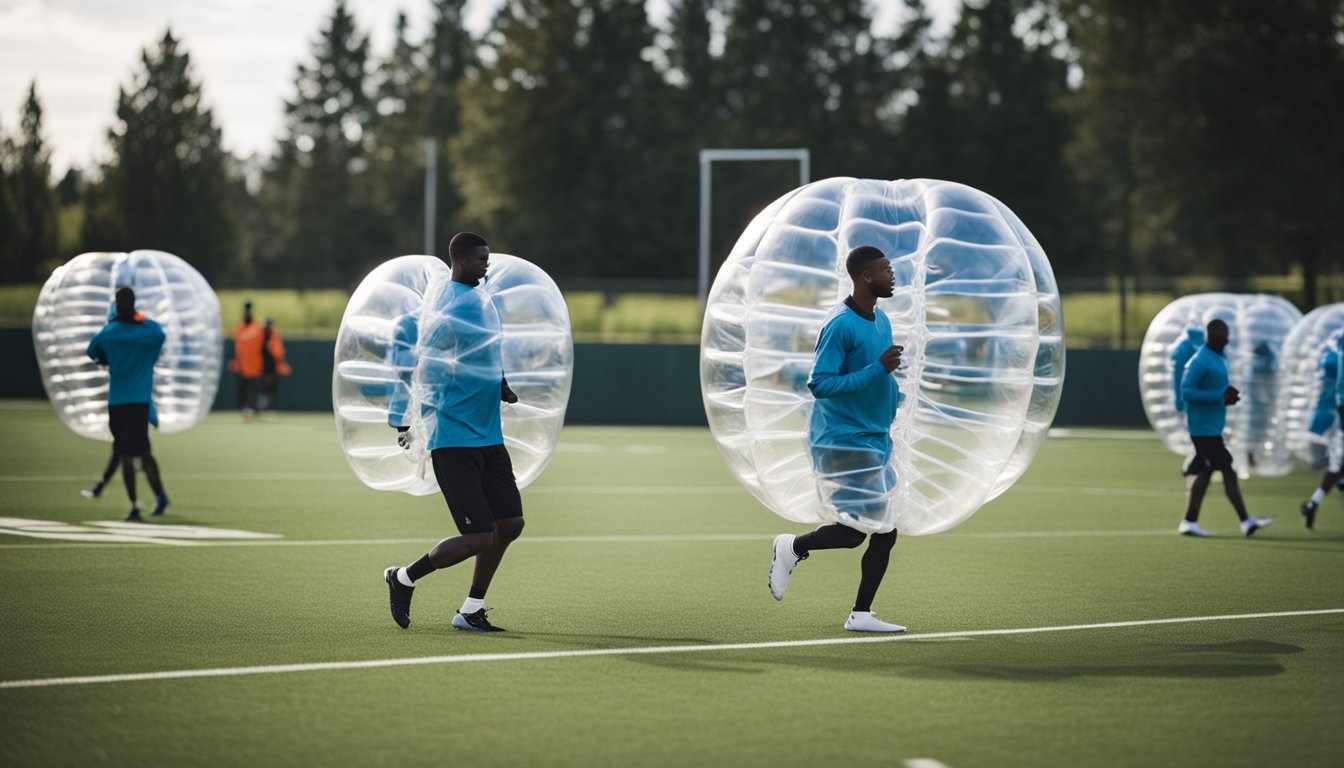Late updated: 08 Aug 2024 13:08
Written by: Emma Saunders
Bubble Football Training Drills for Beginners: Essential Tips for New Players
If you're new to bubble football, you're in for a thrilling adventure. Combining the rules of traditional football with the chaotic fun of bubble suits, this sport guarantees an unforgettable experience. By understanding the fundamentals and practising specific drills, beginners can quickly get the hang of bubble football and enjoy it to the fullest.

One of the most essential aspects of bubble football training is learning how to manoeuvre while encased in a bubble suit. It’s not just about kicking the ball; agility, balance, and spatial awareness are crucial. We’ll cover the basic drills that will help you develop these skills, ensuring you can outmanoeuvre opponents and stay on your feet during matches.
To get you started, we’ve compiled a set of drills tailored for beginners. These exercises focus on dribbling, shooting, and improving your overall control within the bubble suit. Each drill is simple yet effective, helping you build the confidence and skills needed to dominate on the bubble football pitch.
Key Takeaways
- Bubble football combines traditional football with bubble suits for added fun
- Mastering agility and balance is crucial for beginners
- Specific drills help improve dribbling, shooting, and control
Fundamentals of Bubble Football Training for Beginners
In Bubble Football, beginners must grasp fundamental skills and training methods to ensure both fun and safety. Key areas of focus include understanding the game, developing essential skills, and effectively setting up training sessions.
Understanding the Basics of Bubble Football
Bubble Football differs from traditional football as players are encased in inflatable suits. This adds a unique layer of difficulty and fun.
Safety is paramount, and beginners should learn how to fall and bounce safely within the bubble. We ensure that players use the correct size of bubble suits to maintain comfort and mobility.
The basic rules are simple: score goals while navigating the challenges posed by the bubble. The use of traditional football skills like dribbling, passing, and shooting are made more demanding due to the encumbrance of the suit.
Key Skills Development
Ball control becomes crucial, as the bubble significantly reduces dexterity. Beginners need to practise maintaining possession while encumbered.
Dribbling skills must be adapted. Smaller touches and quick changes in direction can help maintain control.
Passing requires more accuracy. Players should focus on precision rather than power, especially given the distortion caused by the bubble suit.
Shooting while in a bubble suit necessitates strong coordination. We often have players start with shots from stationary positions before progressing to more dynamic shots.
Decision-making skills are tested rigorously as the inflatable suit limits vision and spatial awareness. Regular practice helps players improve their quick-thinking abilities in confined spaces.
Setting Up a Training Session
Effective training sessions should start with a warm-up to prevent injuries. Light jogging and stretching are key to preparing the body.
During drills, it's essential to moderate intensity. Exercises like bubble football dribbling through cones, paired passing drills, and controlled shooting can help build basic skills.
Coaches should focus on safety first, ensuring players understand how to use the suits correctly. We often use a mix of individual exercises and small-sided games to keep sessions engaging and fun.
End each session with a cool-down period. Stretching and light jogging help players' muscles recover, ensuring they’re ready for the next session.
Specific Drills and Exercises for Beginners

In bubble football training, it's essential to focus on fundamental skills such as dribbling, passing, shooting, defensive tactics, and overall agility. These drills will help to develop body control, strength, and reaction time, which are crucial in mastering the game.
Dribbling Drills
Dribbling is key in bubble football. We recommend starting with cone dribbling exercises. Set up cones in a straight line and practice weaving through them using both feet. This helps in improving footwork and body control.
Footwork Drills:
- Cone Weave: Place cones a yard apart and dribble around them.
- Figure 8 Dribble: Arrange two cones and dribble in a figure 8 pattern.
These drills should be executed slowly at first, then increase speed as control improves.
Passing and Shooting Fundamentals
Accurate passing and effective shooting are vital. Start by practising short passes with a partner. Focus on controlling the ball with both feet.
Key Exercises:
- One-Touch Passing: Stand a few yards apart and pass the ball back and forth without stopping.
- One-on-One Shooting Drill: Position yourself near the penalty spot and take turns shooting into the goal with different parts of the foot.
Practise these drills to enhance precision and confidence during matches.
Defensive Skills and Conditioning
Defensive skills are just as important. Focus on form tackling and positioning drills. This helps to effectively block and tackle opponents without breaking the bubble.
Important Drills:
- Cone Traffic: Move through a series of cones set at random intervals to improve reaction time.
- Form Tackling: Practise controlled tackles with a partner, ensuring proper posture and body control.
These drills should be performed with intensity to simulate game conditions.
Agility and Coordination Exercises
Agility and coordination are critical to manoeuvring in the bubble.
Essential Agility Drills:
- Ladder Drills: Use a speed ladder and perform high knees, side steps, and in-and-out movements.
- Shuttle Runs: Set up markers and run back and forth in short bursts.
Coordination exercises, such as these, will aid in quick direction changes and maintaining balance during play.
Engaging in these specific drills allows us to build foundational skills required in bubble football. Each exercise focuses on different aspects of the game, providing a comprehensive training regimen.
Frequently Asked Questions

We address the essential questions beginners have when starting training drills for bubble football, focusing on improving skills and setting up effective sessions. Let's explore detailed and actionable advice on each topic.
What are the basic bubble football drills for novice players?
For novice players, we recommend starting with simple movement drills to get accustomed to the unique dynamics of bubble football. Drills such as zigzag running, quick direction changes, and basic ball handling are ideal. These exercises help players feel more comfortable with their bubbles and improve coordination on the field.
How can beginners improve ball control in bubble football?
Improving ball control can be challenging due to the additional bubble equipment. We suggest focusing on drills that emphasise footwork and balance. Practices like dribbling through cones and maintaining possession while manoeuvring around obstacles help build better ball-handling capabilities. Consistent practice ensures gradual improvement.
Which passing drills can be adapted for bubble football training?
Effective passing is crucial in bubble football. Adapting traditional passing drills, such as the "give and go" drill, can be beneficial. Pair up players to pass the ball back and forth while moving. Another useful drill is the triangle pass, where groups of three practice maintaining possession and executing quick passes.
What ball mastery techniques are suitable for bubble football beginners?
Ball mastery involves fine-tuning close control and precision. Basic techniques such as toe touches, side-to-side taps, and pull-push movements are suitable for beginners. Incorporating these drills in warm-ups can significantly enhance a player's touch and confidence with the ball within the bubble's constraints.
How can you effectively set up a football training session for new players?
Setting up an effective training session involves balancing skill development and enjoyment. We recommend starting with a warm-up, followed by fundamental drills focusing on movement and ball control. Then, include specific passing and shooting exercises. Conclude with a scrimmage to apply the skills in a real game scenario. Keep sessions structured yet flexible.
What are some simple football drills that can be performed at home?
Practising at home keeps skills sharp. Simple drills include juggling the ball to improve touch and coordination. Wall passes are excellent for refining passing accuracy. Dribbling around household objects can help maintain control. Even without a full setup, these activities ensure ongoing skill development.
